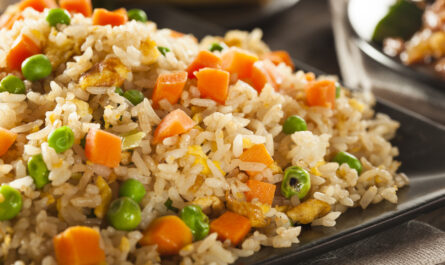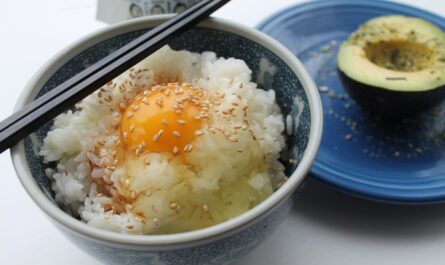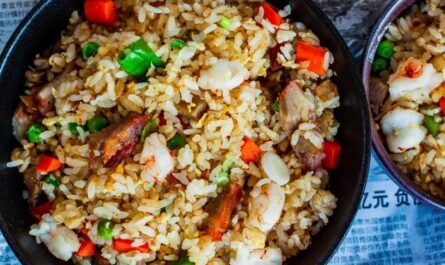Learning how to cook rice in a stovetop pressure cooker opens up a whole new world of culinary possibilities while providing a perfect solution for busy home cooks and sushi enthusiasts alike. The simplicity, speed, and flavorful results of cooking rice using this method are sure to elevate your meals and bring joy to your kitchen experience.
Understanding how a pressure cooker works and how it enhances the rice cooking process is essential. With pressure cooking, you can achieve fluffy, perfectly cooked rice in a fraction of the time it would take using traditional methods. This modern approach harnesses steam pressure, which raises the boiling point of water, allowing for faster cooking without compromising texture or taste. The end result is rice with unmatched quality and flavor that can complement a variety of dishes from various cuisines, especially Japanese delicacies like sushi.

Gather Your Essential Tools and Ingredients
Ingredients:
- 1 cup of white rice (e.g., jasmine or basmati)
- 1 1/2 cups of water
- A pinch of salt (optional)
To cook rice in your stovetop pressure cooker, begin by assembling the necessary tools: a pressure cooker, a knife, a cutting board, and appropriate cookware cleaner. It’s important to maintain your equipment in optimal condition to ensure the success of your culinary endeavors. You may also want to consider applying cutting board oil to keep your cutting board in pristine shape.
Step-by-Step Guide to Cooking Rice
Before you begin, thoroughly rinse the rice under cold water. This step removes excess starch, which might cause the rice to stick together during cooking. You can use a fine-mesh strainer to speed up this process effectively. Once washed, transfer the rice to the pressure cooker, add the water, and sprinkle a pinch of salt if you desire.
Lock the lid onto your pressure cooker securely and place it on a medium heat source. As the water begins to boil, pressure will start to build, creating steam that cooks the rice rapidly. Depending on the model and type of pressure cooker you’re using, adjust the heat setting accordingly to maintain optimal pressure throughout the cooking process.
Once the desired pressure is achieved, typically signaled by the cookers noise and weightiness, continue cooking for about 4-6 minutes. It’s vital not to overcook to avoid mushy rice. After reaching the cooking time, allow the pressure to release naturally. Removing the lid too early can result in unevenly cooked rice. The complete natural release of pressure can take a few minutes, giving you a perfect texture and taste.
Exploring the Different Types of Rice
When cooking rice, its essential to understand the different varieties at your disposal and how they perform in a pressure cooker. Each type of rice may require slight adjustments in water content or cooking duration to attain the best results.
White Rice varieties like basmati and jasmine feature long, slender grains perfect for absorbing flavors. These need less water and cook faster, making them ideal choices for quick meals. Cook Basmati Rice in a pressure cooker with this easy guide.
Brown Rice is an excellent option for those seeking whole-grain benefits and a nutty flavor profile. Although it generally requires more water and time than white rice, the process is equally effortless in a pressure cooker. Adjust for an additional cooking time of about 10 minutes to ensure tenderness.
Another delightful option is sushi rice which pairs exceptionally well with Japanese dishes like sushi and sashimi. Sushi rice’s sticky nature works excellently in a pressure cooker once thoroughly rinsed and cooked precisely. Explore the art of making sushi at home with step-by-step guidance from Sushi and Rice.
Troubleshooting Common Issues
While learning how to cook rice in a stovetop pressure cooker often leads to flawless results, you may encounter some common obstacles along the way. One of the most typical challenges is dealing with rice sticking to the bottom of the cooker. This issue can usually be avoided by ensuring adequate moisture levels and allowing the pressure to release naturally without rushing the process.
Another problem may arise if the rice is undercooked or lacks adequate moisture. To remedy this, briefly return the cooker to the heat after adding a small amount of hot water and gently fluff the rice as needed while cooking once more.
To expand your pressure cooking expertise and gain additional insights, visit Our Best Bites for comprehensive guidance, tips, and tricks.

Enhance Your Techniques and Enjoy Delicious Results
Mastering the art of how to cook rice in a stovetop pressure cooker isn’t just about perfecting rice; it also involves understanding and refining skills that elevate other pressure-cooked dishes. These newly acquired techniques can inspire creativity in your cooking routine, opening the door to culinary adventures with modern tools. For more ideas on cooking with pressure cookers, explore recipes, guides, and tips at Green Beans Cooking, where you’ll find comprehensive resources to enhance your culinary journey.
This article contains affiliate links. We may earn a commission at no extra cost to you.




